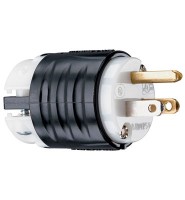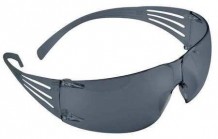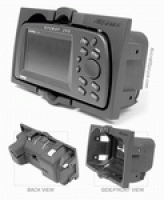1-877-795-2278 | info@aircraftspruce.ca
Aircraft Spruce Canada
Brantford, ON Canada
Corona, CA | Peachtree City, GA
Chicago, IL | Wasilla, AK
Aircraft Spruce Canada
Brantford, ON Canada
Corona, CA | Peachtree City, GA
Chicago, IL | Wasilla, AK
THE AVIATION SUPERSTORE FOR ALL YOUR AIRCRAFT & PILOT NEEDS | 877-795-2278
B-17G Liberty Bell Model
$358.00/Each
Part# 13-10457
MFR Model# AB17LBT
MFR Model# AB17LBT
Overview
|
This collectible B-17 represents one of the iconic aircraft of World War II, Boeing’s Flying Fortress. This model B-17G shows “Liberty Bell,” a B-17G owned and operated by the Liberty Foundation. Out of more than 12,000 B-17s built, only a few are flyable, including Liberty Belle. Painstakingly built from Philippine mahogany by our skilled craftsmen with a wealth of detail, this 1/60-scale model B-17G – the definitive version of the Flying Fortress - makes a great gift for any aviation buff or history fan. The B-17 was not the fastest, highest-flying bomber of World War II, not did it carry the largest bomb load. What it could do, and proved it time after time, was take astonishing amounts of damage and return its crew home. While the Flying Fortress served in every theater of the war, it is the missions over Europe that brought the four-engine Boeing lasting fame. The history of the B-17 dates back to 1934, when the Army Air Corps began seeking a replacement for the twin-engine Martin B-10. Boeing developed a four-engine model based on the XB-15 and its Boeing 247 airliner. Competition for the contract came from the Douglas DB-1 and the Martin Model 146, both twin-engine designs. Boeing’s Model 299 showed dazzling performance for the time, flying from Seattle to Dayton, Ohio’s Wright Field at an average speed of 235 mph, as fast as many fighters of the day. At Wright Field, Army officials set to determine the B-10’s replacement with a fly-off between the three contenders. On Oct. 30, 1935, Maj. Ployer Peter Hill, an Air Corps test pilot, along with Boeing test pilot Les Tower took off for an evaluation flight. However, a gust lock had been left on the aircraft, causing a crash on takeoff that killed Hill and Tower. The Model 299 did not complete the evaluation and Army officials ordered Douglas B-18 Bolos as the B-10’s replacement. However, top Army officials were impressed with the Boeing’s performance, and ordered 13 YB-17s in 1936 for further evaluation. By November 1941, orders had totaled 155 aircraft, but production would soon accelerate. By war’s end, more than 12,000 B-17s would be produced. The first B-17s to see combat was the B-17C, with each design iteration adding more power or weaponry. The final version, the B-17G included a chin turret to help defend against head-on attacks, an area in which the bombers were especially vulnerable. The B-17 was 74 feet long, with a wingspan of 103 feet, and was powered by four Wright R-1820 cyclone engines of 1,200 horsepower each. Top speed was 287 mph, with a maximum range of 2,000 miles with a 6,000-lb. bomb load. Later models of the B-17 bristled with .50-caliber machine guns, several in powered turrets. Capt. Robert Morgan, pilot of the B-17F Memphis Belle, recalled in his 2001 autobiography his reaction to seeing the B-17. “All those other planes that had seemed so intoxicating when I was cutting my teeth on them – the yellow PT-17s, the Lockheed Hudson, all the rest of them—well, it was as if they never existed.” Morgan wrote in “The Man Who Flew the Memphis Belle.” “One look at the B-17, silver and elegant and indomitable-looking on the tarmac, bristling with armature, that massive reassuring tailfin crowning its splendid architecture, and the world started all over again.” As far as its nickname “Flying Fortress,” Morgan wrote, “To me and the thousands of men who flew her, “goddess,” would not have been overdoing it.” Although the British used a few B-17Cs as early as 1941, it remained for the Eighth Air Force to bring the B-17 into its own. The first American B-17 unites began arriving in England in May 1942, with the first mission – to bomb railroad yards in France – flown on Aug. 17, 1942. Then-Maj. Paul Tibbets, who would fly the B-29 Enola Gayto drop an atomic bomb on Hiroshima, led the mission. It would be almost another year before the Eighth Air Force would begin its bombing offensive against Germany in earnest. By the summer and fall of 1943, large formations of B-17s were flying missions deep into Germany. A lack of fighter that could escort the bombers to the target and back added to the vulnerability of the bomber formations and despite the heavy firepower on each B-17, losses were heavy. On Oct. 14, 1943, 59 bombers out of 291 launched were lost on a mission to bomb ball-bearing factories in Schweinfurt. The losses forced a suspension of raids into Germany until long-range fighter escorts were available. In 1944 and 1945, formations of hundreds of B-17s were again flying deep into Germany, with long-range P-51 Mustang fighters helping ease losses. By war’s end, the B-17 was obsolete, with the B-29 Superfortress supplanting it as the nation’s top-of-the-line bomber. Thousands were scrapped, but others flew on as drones, drone controllers and rescue craft, as well as in other support roles. The last operational B-17 mission by the U.S. Air Force was flown on Aug. 6, 1959, when a B-17 controlled a drone B-17 as a target for an air-to-air missile test. The B-17G now flying as Liberty Bell is based on a famous survivor of a bombing raid to Dusseldorf, Germany on Sept. 9, 1944. One of the low squadrons of the 390th Bomb Group took a direct hit from flak in its bomb bay, detonating its 1,000-lb. bombs and destroying or knocking out nine of the 12 aircraft in the formation. Six B-17s were lost over the target; one flew for two hours on a single engine to land in Paris; another landed in Belgium. One plane struggled home, landing long after the other 39 Flying Fortresses had returned to England. The plane? Liberty Bell – and she went on to complete 64 combat missions. The current Liberty Bell was originally sold for scrap in 1947, but was bought by engine maker Pratt & Whitney as a testbed for their T-34 and T-64 turboprop engines. With the prototype engines mounted in its nose, the B-17 was the only 5-engine B-17 ever to fly. Pratt & Whitney operated the plane until 1967, when it was donated to the Connecticut Aeronautical Historic Association in East Hartford. Heavily damaged in a tornado in 1979, she languished for years before restoration began in 1987. Now operated by the Liberty Foundationof Tulsa, Okla., Liberty Belle flies at air shows and offers rides around the nation, keeping awareness alive of the service and sacrifices made in World War II. |
Q&A
Please note, Aircraft Spruce Canada's personnel are not certified aircraft mechanics and can only provide general support and ideas, which should not be relied upon or implemented in lieu of consulting an A&P or other qualified technician. Aircraft Spruce Canada assumes no responsibility or liability for any issue or problem which may arise from any repair, modification or other work done from this knowledge base. Any product eligibility information provided here is based on general application guides and we recommend always referring to your specific aircraft parts manual, the parts manufacturer or consulting with a qualified mechanic.

 Aircraft Spruce Canada
Aircraft Spruce Canada






















